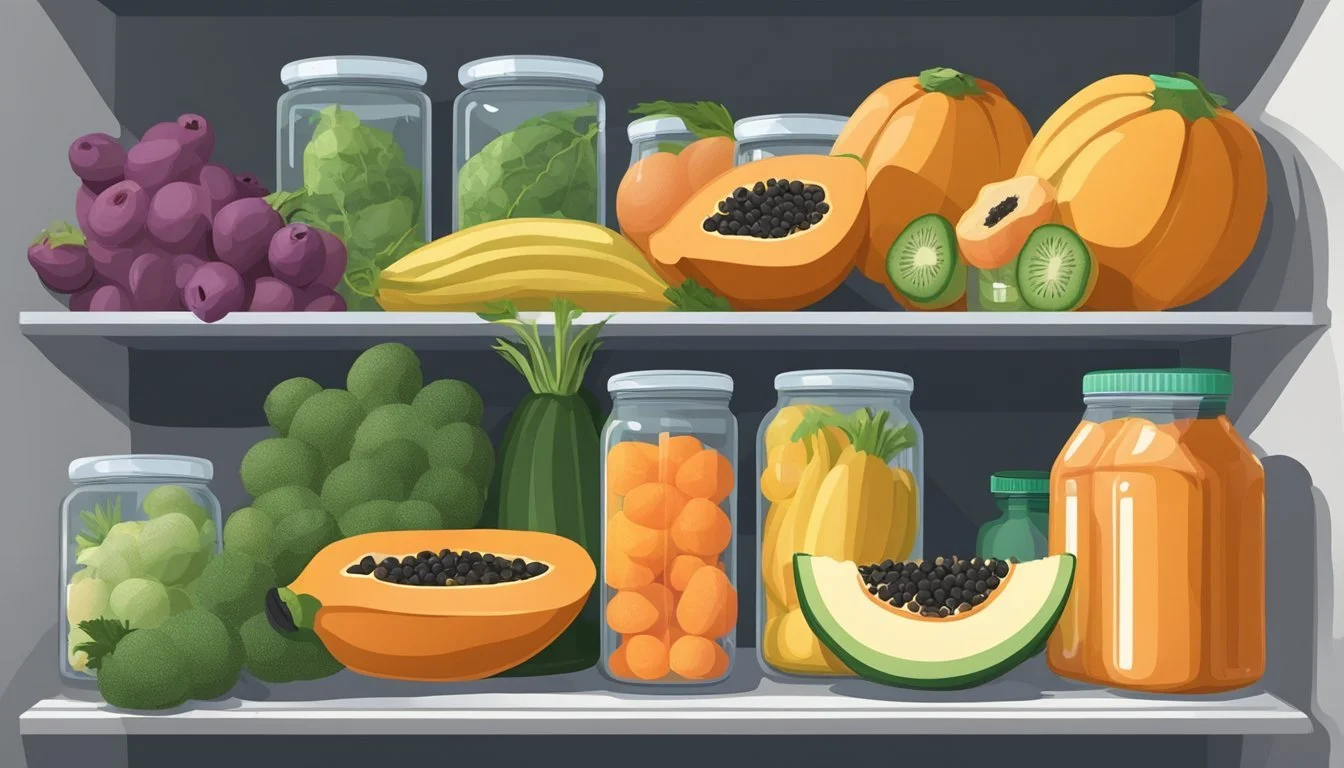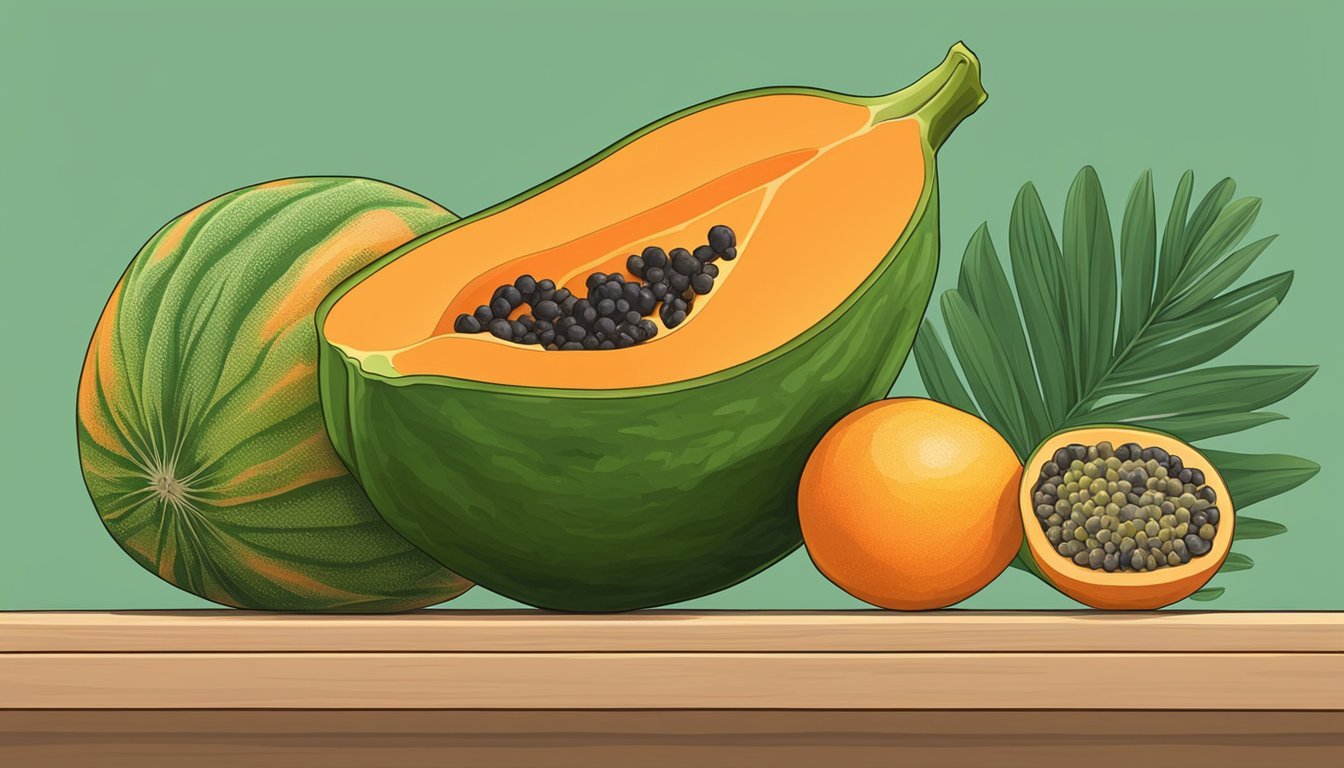How Long Do Papayas Last?
Understanding Shelf Life and Storage Tips
Papayas are a delicious tropical fruit known for their vibrant orange flesh and sweet taste. Understanding the shelf life of papayas is crucial for enjoying their optimal flavor and nutritional benefits. They follow a typical pattern of ripening, starting from a green exterior that gradually turns yellow as they mature. A ripe papaya will generally last for 2 to 3 days at room temperature. However, if stored properly in the fridge, its lifespan can extend to 5 to 7 days.
The longevity of papayas also depends on their ripeness when purchased or picked. Unripe, green papayas can last longer, generally around 5 to 7 days at room temperature and up to two weeks if refrigerated. For those who choose to store the fruit for an even extended period, freezing ripe papaya can be an effective method. When properly stored in the freezer, papayas can retain their quality for 10 to 12 months.
Identifying Papaya Ripeness
When choosing a papaya, detecting its readiness for consumption is essential for the best eating experience. One must carefully examine the skin's color, feel the fruit's texture, and possibly smell before determining its ripeness.
Color, Feel, and Smell
A ripe papaya typically exhibits a skin color transformation from green to shades of yellow or orange. Identification of a ripe fruit can reliably be done by:
Color: A papaya that is mostly yellow, with a little green, generally indicates ripeness.
Feel: The fruit should yield slightly to pressure, but it shouldn't be overly soft or mushy.
Smell: A subtle sweet aroma is another marker of a ripe papaya.
Conversely, unripe papaya holds a predominantly green color and will feel firm with an absence of smell.
Ripeness and Flavor
The ripeness of a papaya not only affects its texture but also its flavor:
Ripe papaya: It should have a creamy, sweet taste and a butter-like consistency when eaten.
Unripe papaya: An unripe one lacks flavor and may appear less juicy and more hard or fibrous in texture.
Finding the balance in ripeness ensures the papaya's flavor is at its peak—neither bland nor overly fermented.
Proper Storage Conditions
Storing papayas correctly is essential to maintain their freshness and extend their shelf life. Each storage method can significantly affect how long they stay edible and flavorful.
At Room Temperature
Papayas thrive at room temperature until they ripen. They can be stored on the counter, preferably in a ventilated space away from direct sunlight. If the fruit is unripe, one can place it in a paper bag to expedite ripening. Ripe papayas at room temperature should be consumed within a day or two to prevent over-ripening.
Refrigerating Papayas
Once ripe, papayas should be refrigerated to slow down the ripening process and preserve their quality. In the refrigerator, they can last for about 5-7 days. If one intends to store cut papaya, it's recommended to place it in an airtight container to prevent it from absorbing odors and to retain its moisture.
Freezing Papayas
Freezing is the best option for long-term storage of papayas. To freeze papayas:
Peel the fruit and remove any seeds.
Cut into consistent sized pieces.
Arrange the pieces on a baking sheet in a single layer to freeze initially.
Once frozen, transfer to an airtight container or a heavy-duty freezer bag.
Frozen papaya can last for up to 10-12 months in a freezer. Remember to label the container with the date to keep track of how long it's been stored.
Shelf Life and Spoilage
Papayas possess varying shelf lives depending on their state—whole or cut—and storage conditions. Recognizing spoilage signs is crucial to prevent consuming overripe, unsavory fruit.
Whole and Cut Papayas
Whole Papayas:
Unripe whole papayas last about 5-7 days at room temperature. If stored in the refrigerator, they can last up to two weeks.
Ripe whole papayas, in contrast, have a shorter shelf life. At room temperature, they should be consumed within 2-3 days. In the refrigerator, 5-7 days is the optimal time frame before quality begins to diminish.
Cut Papayas:
Once papayas are cut, their longevity decreases. In the refrigerator, they can be expected to last between 3-5 days.
To extend their freshness, it’s best to store cut papaya in an airtight container or tightly wrapped in plastic wrap.
Signs of Overripeness and Mold
Overripe Papayas:
Papayas that are overripe often yield too much to slight pressure and have a strong, overly sweet smell.
The skin may exhibit dark spots and the flesh may become excessively soft.
Mold and Spoilage:
Signs of spoilage include the presence of mold, which is often visible as fuzzy spots on the skin or flesh.
If the papaya has an off smell, leaking fluids, or visible mold, it should be discarded to avoid potential health risks.
Health Benefits and Nutritional Information
Papayas are a tropical fruit known both for their rich nutritional profile and their health benefits, particularly in aiding digestion due to their enzyme content. These fruits (What wine goes well with fruits?) offer a bounty of vitamins that contribute to overall wellness.
Papaya's Nutrients and Vitamins
Papayas are an excellent source of vitamin C, which is essential for maintaining a healthy immune system. They offer a substantial amount of this antioxidant, surpassing the recommended daily intake in just one serving. Additionally, papayas are rich in vitamin A, important for vision and skin health. Below is a table highlighting the key nutrients in a one-cup serving of papaya:
Nutrient Amount Per Serving (1 cup, 145g) Calories 62 kcal Fiber 2.5 g Vitamin C Significant percentage of the RDI Vitamin A Adequate contribution to the RDI Potassium Contribution to daily needs Folate (Vitamin B9) Beneficial amount
Consuming papayas contributes to the reduction of inflammation in the body due to its content of vitamins, minerals, and antioxidants.
Enzymes and Digestion
Papayas contain a unique enzyme called papain, which helps digest proteins and facilitates a healthy digestion process. Papain's function is similar to that of digestive enzymes produced by the pancreas, making papaya especially beneficial for people experiencing digestion-related issues. The presence of fiber in papayas further aids the digestive system by promoting regular bowel movements and alleviating constipation.
This combination of enzymes and fiber in papaya supports not only digestion but also can help reduce symptoms of bloating and discomfort after meals. The contribution of these natural digestive aids is a notable aspect of the fruit's health benefits.
Incorporating Papaya Into Your Diet
Integrating papaya into one's diet offers a mix of versatility and nutritional benefits. This fruit can be consumed fresh or frozen, and it pairs well with a variety of flavors in different dishes.
Fresh and Frozen Papaya Recipes
One can harness the tropical taste of papaya through various recipes. Ripe papayas are ideal for consumption as they are or blended into smoothies. Here are some ways to enjoy fresh and frozen papaya:
Smoothies: Blend ripe papaya chunks with other fruits such as mangoes or berries for a nutrient-rich drink.
Fruit Salad: Combine fresh papaya with other fruits like kiwi, pineapple, and citrus segments for a refreshing fruit salad.
Papaya Salsa: Dice fresh papaya and mix with ingredients like onion, cilantro, and lime juice to create a vibrant salsa.
Frozen papaya retains its nutrients and is a convenient option for smoothies. It can be cut into cubes and stored in the freezer, making it easy to have on hand.
Papaya as a Complementary Flavor
Papaya's sweetness and texture make it a complementary ingredient in an array of dishes:
With Seafood: Add papaya to ceviche or shrimp salads for a hint of sweetness and a tender bite.
In Baked Goods: Diced or dried papaya can be incorporated into muffins or bread for tropical flair.
Papaya Salad: Craft a savory papaya salad by mixing in vegetables, lime dressing, and herbs.
Papaya's versatility extends to different culinary contexts, from a standalone fruit to a component that enhances the overall flavor profile of a meal.
Frequently Asked Questions
This section addresses common inquiries about how to handle papayas properly and the various storage lifespans, ensuring optimal freshness and avoiding spoilage.
Papaya Handling and Precautions
When selecting papayas from a grocery store, one should look for fruit that has a slight give to ensure ripeness, but avoid those with a mushy texture which indicates over-ripeness. Green papayas, on the other hand, can ripen at home. They should be washed before consumption or storage to remove any potential contaminants. To speed up ripening, store papayas at room temperature away from ethylene-producing fruits like avocados, as such fruits could cause uneven ripening or spoilage.
Freshness can be preserved by storing ripe papayas in the refrigerator, which will extend their shelf life up to a week. In contrast, ripe Mexican papayas or other types of large papayas sliced and treated with lemon juice can be kept in an airtight container, extending their fridge life slightly due to the acid's natural preservative qualities. Proper handling is crucial; after cutting a papaya, the unused portion should be refrigerated immediately to maintain optimum freshness.
Cross-Referencing Storage Lifespan
The storage lifespan of papayas can be affected by factors like size, ripeness, and the storage method used. Here is a brief summary of how long papayas last under different storage conditions:
At room temperature:
Ripe papayas: Approximately 2-3 days.
Unripe papayas: Approximately 5-7 days.
In the refrigerator:
Ripe papayas: 5-7 days.
Unripe papayas: Up to 2 weeks.
In the freezer:
Ripe papayas (sliced and properly stored): 10-12 months.
It’s important to note that papayas can go bad, reflected by a fermented smell or mushy texture. High humidity and improper handling can accelerate spoilage. Ripe papayas should be consumed promptly or stored properly to avoid waste.







